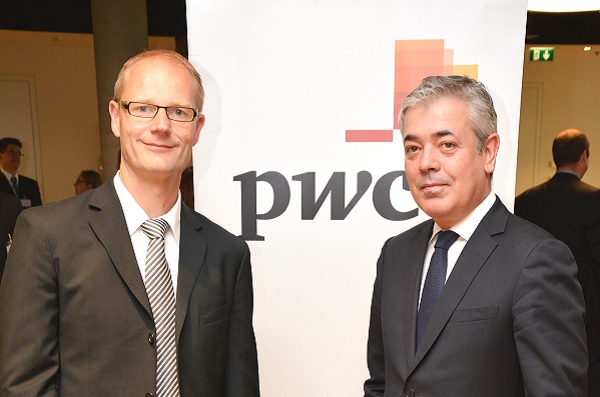
Securitisation, the process of packaging cash generating assets into a bond-like instrument, was hit hard after the 2008 global financial crisis.
As a result, governments created greater supervision and a pack of rules aiming at making securitisation vehicles transparent. Since then, the securitisation market has been slowly returning to its heyday, finding a positive echo in Luxembourg with nearly 950 vehicles.
the PwC Luxembourg Securitisation event, which took place on Wednesday, brought together recognised experts, including Guillaume Jolivet, Managing Director of Scope Ratings and Carlo Oly, Head of Issuers and Clients at the Luxembourg Stock Exchange as guest speakers. This annual event, which has been extended this year, provides a platform for professionals to get a grasp of the latest developments on the securitisation market. More than 70 professionals attended this conference to hear about the game-changing developments and what 2015 has in store for securitisation.
Will securitisation return to its heyday?
Before the financial crisis began in 2008, securitisation was the funding and risk-transfer method of choice for a huge number of issuers and the fastest growing contribution to the global capital markets.
The subprime mortgage scandal in the US, the European sovereign debt crisis, and the underlying risk of recession tarnished all securitisation with the same brush.
Recent developments in Europe, including the European Commission’s green paper on Capital markets which dedicated a part to the development of an EU framework for high-quality securitisation, could help restore trust.
Holger von Keutz, partner and Securitisation Leader at PwC Luxembourg, said “By developing a simple, transparent and standardised framework, securitisation transactions meeting these conditions will benefit from a better regulatory treatment.”
Market sentiment still optimistic but regulation seen as a threat
Since the introduction of the Luxembourg Law of 22 March 2004 on securitisation (the “Securitisation Law”), the Luxembourg securitisation market has been developing steadily. Case in point: nearly 950 vehicles were established in Luxembourg as of March 2015.
Holger von Keutz added “The steady rise in the number of securitisation vehicles shows that, despite the international financial crisis, the goal of creating an attractive legal, regulatory and tax framework for securitisation vehicles in Europe – and especially in Luxembourg – has been achieved. It has allowed Luxembourg to become one of the leading centres for securitisation and structured finance vehicles.”
In a poll, the majority of the respondents who attended this event expressed confidence about the future of securitisation in Luxembourg. About 26% of the professionals surveyed assumed that private equity will be the securitisation structure with the biggest growth potential, followed by structured products linked to a performance of an underlying for the retail market. The regulatory environment remains one of the main threats for participants, with the AIFMD and Solvency II being their top concerns.
Oliver Schachinger, partner at PwC Luxembourg, commented on the rise of securitisation in insurance and the impact of Solvency II “The distinction between debt investments and fund investments becomes key under Solvency II because of different NAV shocks. The “look-through” approach to underlying assets can only be avoided in certain circumstances. Any entities being a collective investment undertaking, any investment packaged as a fund and a securitisation will fall into the scope of the look-through approach.”
Jessica Miller from PwC UK provided an overview of the UK securitisation market and announced that EUR 33.9bn of securitised product was issued in Europe (Q1 2015), a decrease of 43.1% from Q4 2014 (EUR 59.6bn) but a significant increase of 70.4% from Q1 2014 (EUR 19.9bn).
The securitisation event ended by the viewpoint of Guillaume Jolivet, who introduced rating methodology and process, and Carlo Oly, who presented the benefits of listing asset-backed securities in Luxembourg.
This event provided the backdrop for presenting PwC Luxembourg’s latest guide dedicated to this market, entitled “Securitisation in Luxembourg”. The revised edition of this brochure underlines the changes the market has undergone since 2012 and details some of the lessons learned, namely in the area of accounting and tax in Luxembourg. Anti-money-laundering regulations, IFRS, AIFMD, Basel III and Solvency II are also tackled in this guide.
Photo (L-R): Holger von Keutz and Oliver Schachinger








